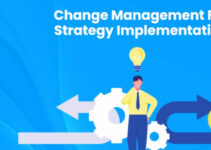Organizational culture offers you the framework and strategic approach to impact, shape, and define the culture of the company. While framing and analyzing the culture, you should take corrective actions to change and optimize the culture. Corporate culture is highly dynamic, it may seem fine one day and not the other day. Today, we’ll discuss the culture change model; the top 3 models like McKinsey 7S framework; the cultural iceberg model; Hofstede’s model; developing a cultural plan, tips to improve the culture; connection between culture and growth.
Even the little things and small changes could have a great impact on the culture; they’re as follows;
- New Hybrid Working Policy
- Changing the employee recruitment process
- New hiring management system
The steps in developing the cultural action plan; they’re as follows;
- Setting goals and objectives for the desired and ideal culture
- Outlining unique values and developing a connection between your work and the company’s values
- Living up to the company’s values and maintaining high standards
- Measuring the values by getting employees’ feedback that they recognize as their own
Tips to improve the organizational culture
- Making the company’s actions and activities align with vision and values
- Connecting with all the stakeholders, public, media, customers, and investors
- Cooperation and collaboration within management and leadership
- Open and transparent communication
- Admiring the company’s capabilities for innovation and accepting the mistakes
- Having a professional plan to deal with challenges
- Recognizing the purpose and the comprehension level of employees
Connection Between Organizational Culture & Company’s Growth
Many research studies have shown that organizational culture has a great impact on the company’s growth and progress in the culture change model.
- Promotes cooperation and collaboration among employees
- Establishes healthy professional relationships
- Provides employees with the reason and resources to think outside the box
- Employees work hard to invest themselves in the company’s vision
- Higher engagement among employees results in the form of higher performance
Culture Change Model – Top 3
Let’s discuss the top three organizational culture change model and they’re as follows;
Hofstede’s Model
Hofstede’s model is completely different from other types of organizational cultural models. It considers organizational culture as an onion with various layers and then reaching the center. However, some of the main cultural layers are as follows;
- Symbols
- Heroes
- Rituals
- Values
Socializing among team members and employees is one of the most powerful elements and factors of Hofstede’s model. The model allows you to develop a cultural change action plan via coordination and collaboration by comprehending the differentiation among departments, units, teams, and individuals.
Usually, new startups and companies follow this model. Because it is suitable to the emerging culture by setting up an environment where all employees could contribute to the defining processes and values. It establishes a sense of trust in the workplace based on feedback and developing a collaborative and coordinating culture.
McKinsey 7S Framework Model
The McKinsey 7S framework focuses on dividing the organizational culture into hard and soft elements. Structure, system, and strategy are the hard elements; style, shared values, skill, and staff are the soft elements.
- Structure: segments people based on team, departments, units, and divisions and how they connect with each other
- Strategy: helps companies to deal with various types of issues and challenges
- System: comprises of formal and informal processes to complete the tasks
- Style or Corporate Culture: outlines managerial style, values, and norms by the management and leadership
- Staff: comprehending employees professional development and processes
- Skill: The talent management team develops the core capabilities of the company
- Shared Values: how the company performs various activities and processes and attaching them with the company’s culture
The model allows the company’s leadership and management to design the company’s elements and find the areas that need the most attention. It offers you a key insight into how various factors and elements are impacting the company. While mapping out various elements, leadership could reshape and change the company’s culture based on the industry’s needs and requirements.
Cultural Iceberg Model
The cultural iceberg model differentiates the company’s visible and invisible elements of the culture. The model divides the hidden and observable elements of the culture and the company’s structure. However, some of the main visible elements are as follows;
- Policies
- Strategy
- Vision
- Mission
Some of the invisible elements of the culture are as follows;
- Unwritten rules
- Values
- Relationships
- Attitudes
- Norms
- Customs
The main driving force behind the iceberg model is the organizational culture that how the company deals with the invisible elements. The model implements the people-focused strategic approach focusing on the company’s needs and requirements by developing a healthy professional relationship.
Conclusion: Organizational Culture Change Model
After an in-depth study of the organizational culture change model; we have realized that organizational culture plays a key role in growth and success. If you are learning about culture change models; then you should keep in mind the abovementioned McKinsey 7S framework model; Hofstede’s model, and the iceberg model.
Ahsan is an accomplished researcher and has a deep insight in worldly life affairs. He goes Live 3 days a week on various social media platforms. Other than research writing, he’s a very interesting person.


